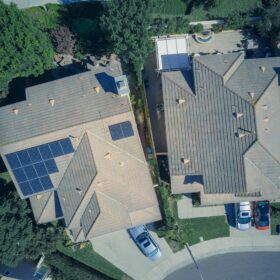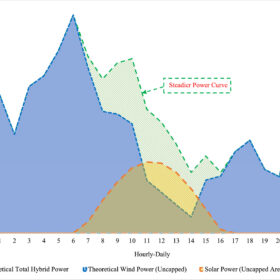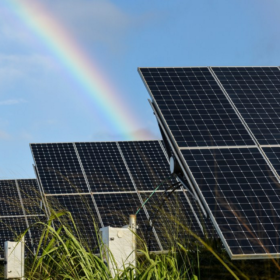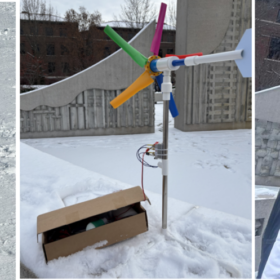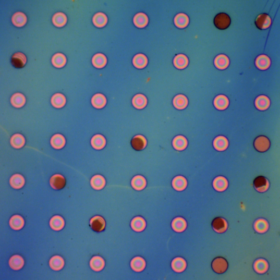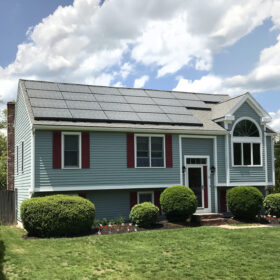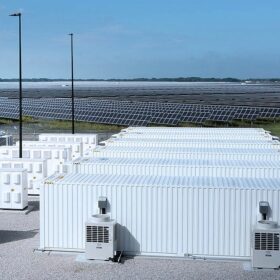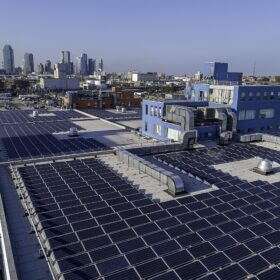Perovskite tandem solar panels selected for utility-scale installation pilot
Solar developer Plenitude will validate Swift Solar’s 28% efficiency perovskite-silicon tandem technology in a utility-scale project.
Community-based energy trading system for home solar-plus-storage
A research team led by Washington State University has developed a cloud-based system for trading and sharing energy from solar panels and batteries within a neighbourhood. The concept displayed potential energy cost savings of around 12% over a five-day test period.
Intermittent solar and wind complement each other for a more stable grid
A study finds combining wind and solar leverages their alternating peak periods, significantly boosting total generation capacity while providing a constant, predictable power curve critical for grid integration.
Solar sidewalks slash urban emissions 98%, study finds
A Concordia model reveals how photovoltaic pavements can electrify urban food delivery and mobility, slashing emissions by 98% while freeing rooftops for agriculture.
PV-powered transportation system for 15-minute cities
A Canadian research team has developed a framework for local urban agriculture production, with the produce harvested distributed by electric vehicles powered by sidewalk-integrated photovoltaics. The PV-powered transportation system was calculated to have a payback time of 2.8 years.
Quantifying uncertainty to produce more useful solar generation forecasts
Renewable energy firm PowerUQ advocates for the use of Uncertainty Quantification (UQ) in solar project analytics to combat the widespread issue of performance shortfalls. By incorporating a wider range of variables and providing probability scenarios like P50 and P90, UQ aims to make solar generation forecasts more useful and accurate over a project’s long lifespan.
Sodium-ion battery storage for ultra-low temperatures
U.S. researchers have developed a sodium-ion pouch cell that operates reliably at temperatures as low as –100 C. The battery was tested with simulated and real renewable energy sources, including wind and solar, and maintained stable performance in both laboratory and field conditions.
MIT researchers develop polymer film that could prevent solar panel corrosion
Engineers at the Massachusetts Institute of Technology say their polymer coating could be used to protect photovoltaic modules, due to its impermeability to gases. The team has demonstrated that a 60-nanometer-thick film can extend the lifetime of a perovskite crystal by several weeks.
‘It’s not a matter of sodium versus lithium, we need both’
A US research team has developed all-solid-state sodium batteries that retain performance down to subzero temperatures. The systems utilize a special chloride-based solid-electrolyte-coated cathode.
Open-access, modular monitoring platform for multi-year outdoor PV testing
A team of researchers in Canada has developed the Jericho Open Resistive Data Logger—an open-access photovoltaic (PV) monitoring platform that integrates data acquisition and processing hardware, a software framework, and a comprehensive sensor array. Designed primarily for agrivoltaic applications, the system has a total estimated cost of around $2,000.

